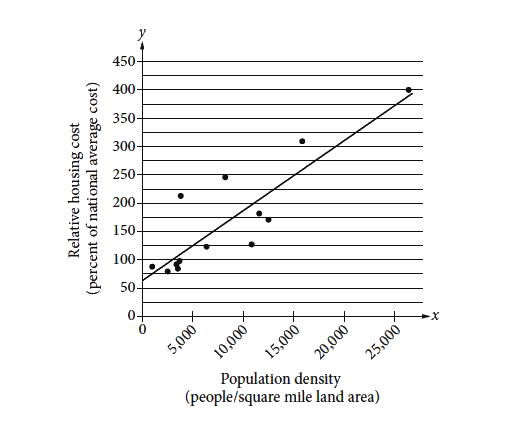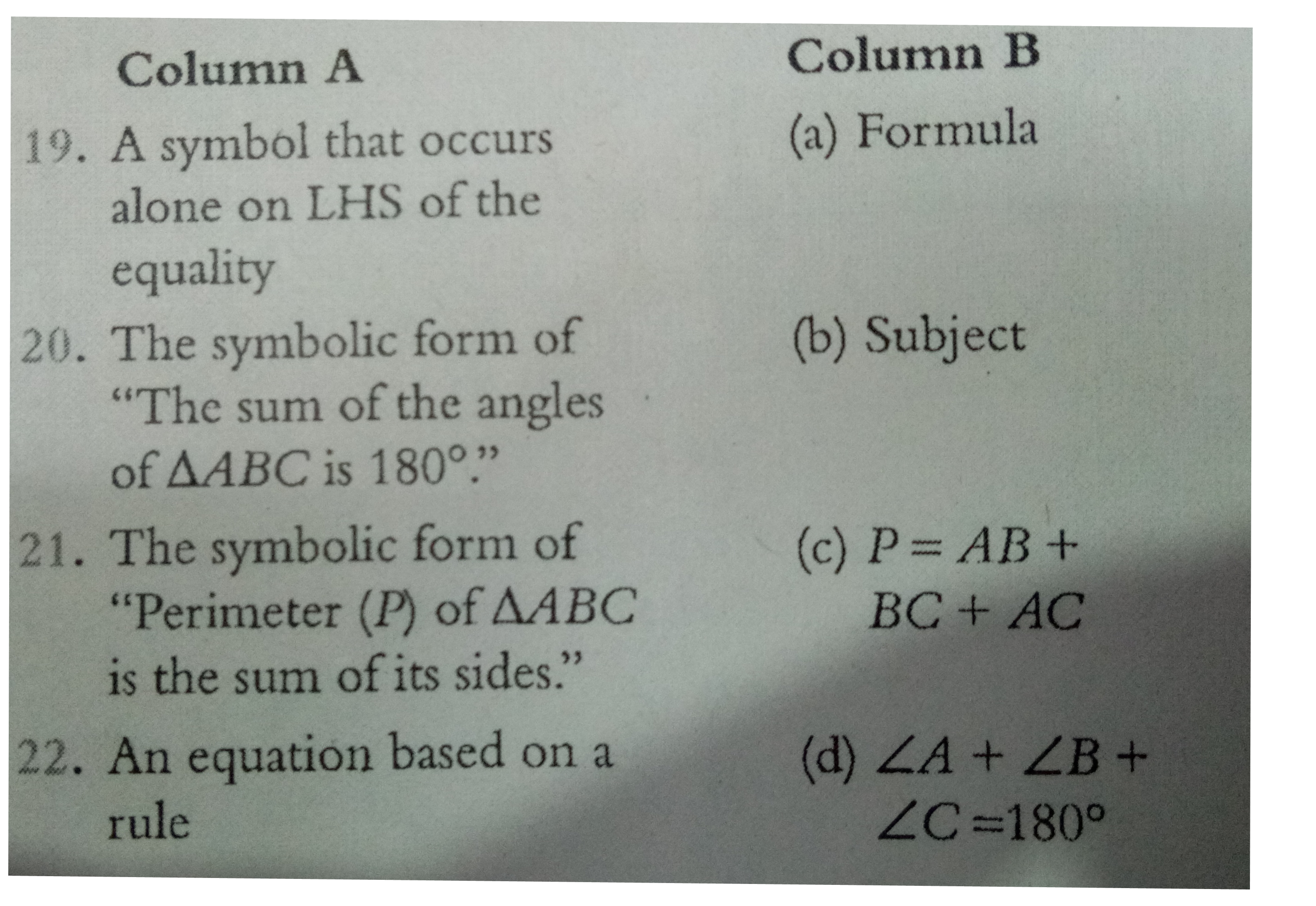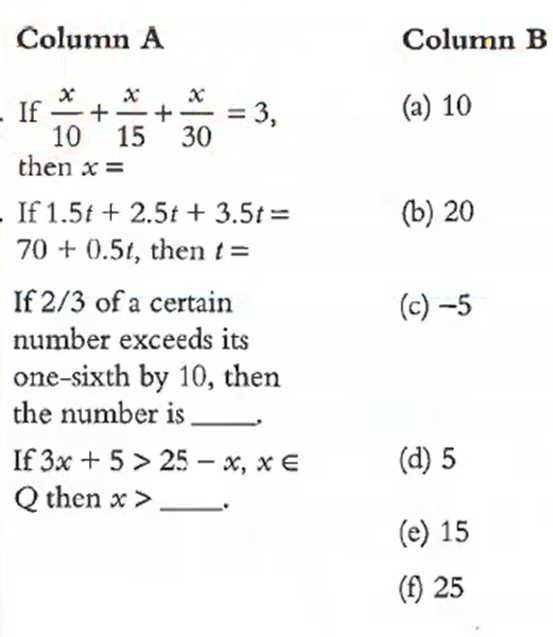The relative housing cost for a US city is defined to be the ratio average housing cost for the citynational average housing cost expressed as a percent.

The scatterplot above shows the relative housing cost and the population density for several large US cities in the year 2005. The line of best fit is also shown and has equation y = 0.0125x + 61. Which of the following best explains how the number 61 in the equation relates to the scatterplot?
In 2005, the lowest housing cost in the United States was about $61 per month.
In 2005, the lowest housing cost in the United States was about 61% of the highest housing cost
In 2005, even in cities with low population densities, housing costs were never below 61% of the national average.
In 2005, even in cities with low population densities, housing costs were likely at least 61% of the national average.
The correct Answer is:D
To interpret what the number 61 in the equation of the line of best fit represents, one must first understand what the data in the scatterplot represent. Each of the points in the scatterplot represents a large US city, graphed according to its population density (along the horizontal axis) and its relative housing cost (along the vertical axis). The line of best fit for this data represents the expected relative housing cost for a certain population density, based on the data points in the graph. thus, one might say, on average, a city of population density x is expected to have a relative housing cost of y%, where y = 0.0125x + 61. The number 61 in the equation represents the y-intercept of the line of best fit, in that when the population density, x, is 0, there is an expected relative housing cost of 61%. This might not make the best sense within the context of the problem, in that when the population density is 0, the population is 0, so there probably wouldn’t be any housing costs. However, it could be interpreted that for cities with low population densities, housing costs were likely around or above 61% (since below 61% would be for cities with negative population densities, which is impossible).
Choice A is incorrect because it interprets the values of the vertical axis as dollars and not percentages. Choice B is incorrect because the lowest housing cost is about 61% of the national average, not 61% of the highest housing cost. Choice C is incorrect because one cannot absolutely assert that no city with a low population density had housing costs below 61% of the national average, as the model shows that it is unlikely, but not impossible.
Similar Questions
Match the following Column A to Column B

View SolutionMatch the following Column A to Column B

View SolutionThe inequation represented by the graph given below is :
View SolutionThe inequation that best describes the graph given below is _________
View SolutionThe inequation that best describes the following graph is _________
View SolutionThe equation of straight line shown in figure is :
ltimg src="https://d10lpgp6xz60nq.cloudfront.net/physics_images/ALN_PHY_R04_E01_020_Q01.png" width="80%"gt
View SolutionA housing society constructed 197 houses. If the cost of construction for each house is Rs. 450000, what is the total cost for all the houses?
View Solution
